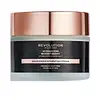What's inside
What's inside
 Key Ingredients
Key Ingredients

 Benefits
Benefits

 Concerns
Concerns

 Ingredients Side-by-side
Ingredients Side-by-side

Water
Skin ConditioningCaprylic/Capric Triglyceride
MaskingShorea Stenoptera Seed Butter
EmollientGlycerin
HumectantPrunus Persica Kernel Oil
EmollientSodium Acrylates Copolymer
Phenoxyethanol
PreservativePolyacrylamide
Lecithin
EmollientC13-14 Isoparaffin
EmollientSodium Hyaluronate
HumectantGlycogen
HumectantChlorphenesin
AntimicrobialLaureth-7
EmulsifyingTocopherol
AntioxidantHelianthus Annuus Seed Oil
EmollientCitric Acid
BufferingWater, Caprylic/Capric Triglyceride, Shorea Stenoptera Seed Butter, Glycerin, Prunus Persica Kernel Oil, Sodium Acrylates Copolymer, Phenoxyethanol, Polyacrylamide, Lecithin, C13-14 Isoparaffin, Sodium Hyaluronate, Glycogen, Chlorphenesin, Laureth-7, Tocopherol, Helianthus Annuus Seed Oil, Citric Acid
Water
Skin ConditioningGlycerin
HumectantSqualane
EmollientShorea Stenoptera Seed Butter
EmollientCaprylic/Capric Triglyceride
MaskingC12-16 Alcohols
EmollientSodium Acrylates Copolymer
Ectoin
Skin ConditioningJojoba Esters
EmollientPalmitic Acid
EmollientPhenoxyethanol
PreservativeHydrogenated Lecithin
EmulsifyingHydroxyethyl Acrylate/Sodium Acryloyldimethyl Taurate Copolymer
Emulsion StabilisingLecithin
EmollientMagnesium Chloride
Ethylhexylglycerin
Skin ConditioningSodium Gluconate
Skin ConditioningCaprylyl Glycol
EmollientAcetyl Hexapeptide-8
HumectantWater, Glycerin, Squalane, Shorea Stenoptera Seed Butter, Caprylic/Capric Triglyceride, C12-16 Alcohols, Sodium Acrylates Copolymer, Ectoin, Jojoba Esters, Palmitic Acid, Phenoxyethanol, Hydrogenated Lecithin, Hydroxyethyl Acrylate/Sodium Acryloyldimethyl Taurate Copolymer, Lecithin, Magnesium Chloride, Ethylhexylglycerin, Sodium Gluconate, Caprylyl Glycol, Acetyl Hexapeptide-8
 Reviews
Reviews

Ingredients Explained
These ingredients are found in both products.
Ingredients higher up in an ingredient list are typically present in a larger amount.
This ingredient is an emollient, solvent, and texture enhancer. It is considered a skin-softener by helping the skin prevent moisture loss.
It helps thicken a product's formula and makes it easier to spread by dissolving clumping compounds.
Caprylic Triglyceride is made by combining glycerin with coconut oil, forming a clear liquid.
While there is an assumption Caprylic Triglyceride can clog pores due to it being derived from coconut oil, there is no research supporting this.
Learn more about Caprylic/Capric TriglycerideGlycerin is already naturally found in your skin. It helps moisturize and protect your skin.
A study from 2016 found glycerin to be more effective as a humectant than AHAs and hyaluronic acid.
As a humectant, it helps the skin stay hydrated by pulling moisture to your skin. The low molecular weight of glycerin allows it to pull moisture into the deeper layers of your skin.
Hydrated skin improves your skin barrier; Your skin barrier helps protect against irritants and bacteria.
Glycerin has also been found to have antimicrobial and antiviral properties. Due to these properties, glycerin is often used in wound and burn treatments.
In cosmetics, glycerin is usually derived from plants such as soybean or palm. However, it can also be sourced from animals, such as tallow or animal fat.
This ingredient is organic, colorless, odorless, and non-toxic.
Glycerin is the name for this ingredient in American English. British English uses Glycerol/Glycerine.
Learn more about GlycerinLecithin is a term for a group of substances found in the cell membranes of plants, animals, and humans. They are made up of mixture of phospholipids.
This ingredient has emollient and emulsifying properties.
As an emollient, lecithen helps soften the skin and creates a barrier to keep moisture in.
As an emulsifier, it also helps prevent water and oil ingredients from separating. Lecithin can also help ingredients be better absorbed by the skin.
This is because the phospholipids in lecithin produce liposomes. Liposomes help other ingredients get through the skin barrier.
Depending on the source of this ingredient, lecithin may not be fungal acne safe. This is because some sources of lecithin come from soybean oil, which may feed the malassezia yeast that feeds fungal acne.
We recommend reaching out to the brand you are purchasing from to inquire about the source of their lecithin.
Some other names for this ingredient include soy lecithin and deoiled soy lecithin.
Learn more about LecithinPhenoxyethanol is a preservative that has germicide, antimicrobial, and aromatic properties. Studies show that phenoxyethanol can prevent microbial growth. By itself, it has a scent that is similar to that of a rose.
It's often used in formulations along with Caprylyl Glycol to preserve the shelf life of products.
Shorea Stenoptera Seed Butter isn't fungal acne safe.
We don't have a description for Sodium Acrylates Copolymer yet.
Water. It's the most common cosmetic ingredient of all. You'll usually see it at the top of ingredient lists, meaning that it makes up the largest part of the product.
So why is it so popular? Water most often acts as a solvent - this means that it helps dissolve other ingredients into the formulation.
You'll also recognize water as that liquid we all need to stay alive. If you see this, drink a glass of water. Stay hydrated!
Learn more about Water